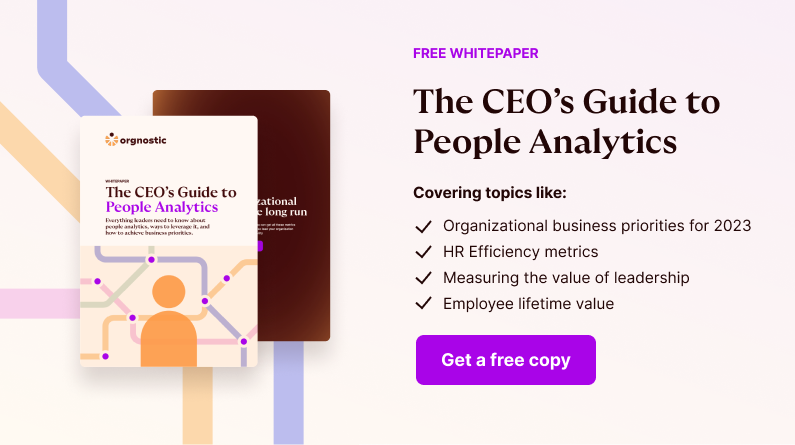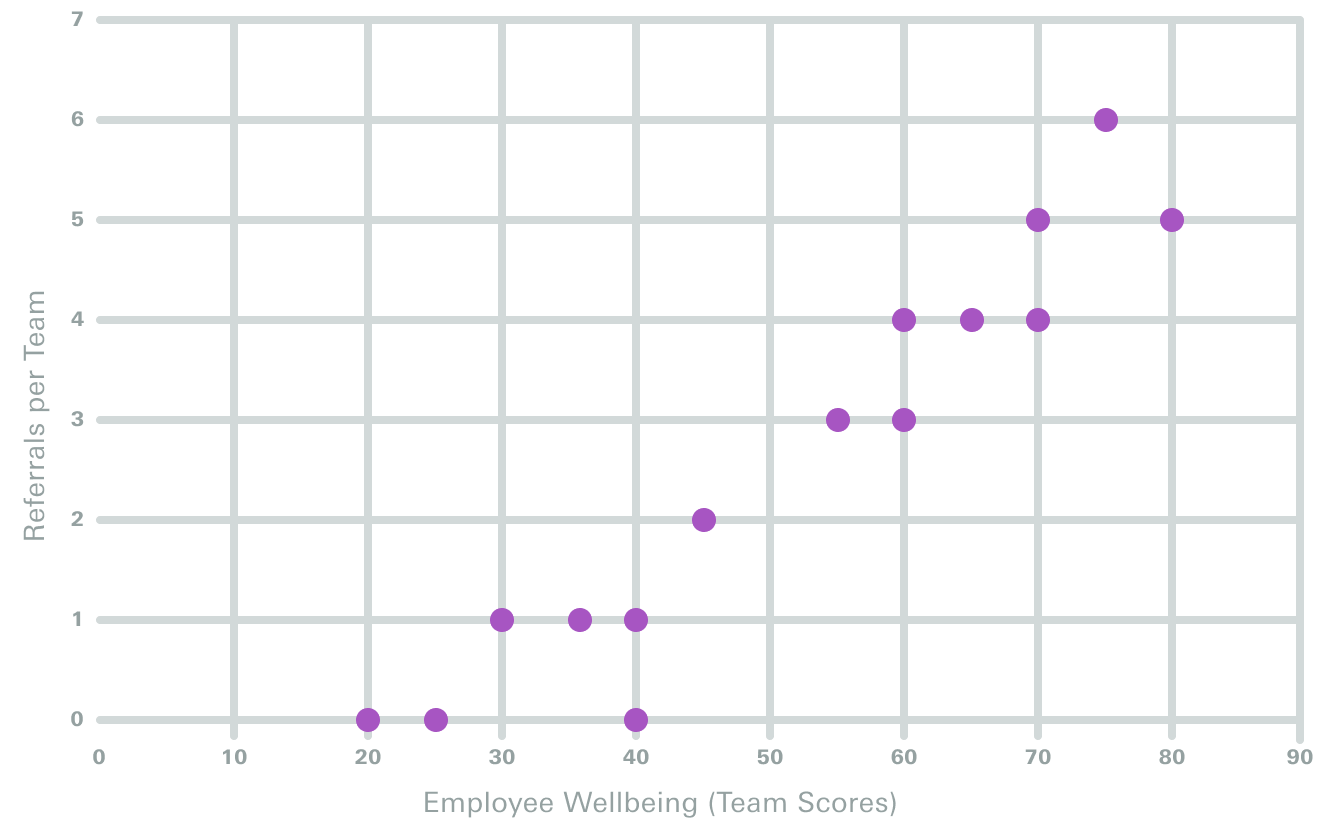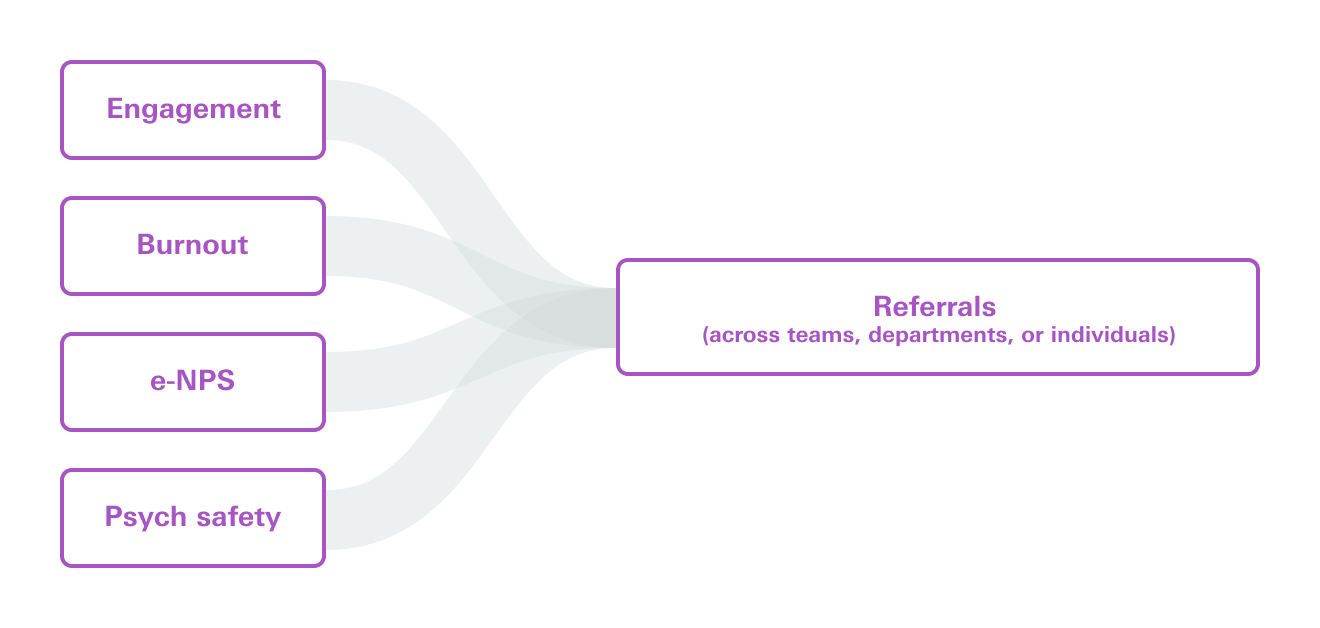If you’ve never calculated the link between wellbeing and referrals, you may want to start now.
Employee wellbeing matters for retention, performance, and maybe unexpectedly — referral rates.
One way to measure the impact of your wellbeing programs is on talent acquisition metrics. With better current employee experiences, employees may refer your open positions to more of their contacts and describe their workplace more positively.
Let’s take a look at how to connect wellbeing and referrals.

How do I calculate employee wellbeing?
There are two ways to look at how employee wellbeing can influence referrals.
One is through a two-dimensional scatterplot, with your measure of wellbeing across the horizontal or x axis and your referral numbers along the vertical or y axis. Measures of employee wellbeing include engagement scores, burnout levels, employee net promoter score (e-NPS), and psychological safety.
Here’s an example image below.

The other way to explain the referral numbers we see is through a multi-dimensional prediction formula.
Multi-dimensional here means there’s multiple wellbeing metrics we’re using to account for the number of referrals we have. A prediction formula, also called a regression model, uses the relationships between these wellbeing metrics and referral amounts to see how strongly wellbeing, in all its forms, predicts referrals. This is more flexible than the scatter plot above, because we can use all kinds of employee metrics at once to explain why you’re receiving that number of referrals.
All the wellbeing metrics above, including engagement, burnout, e-NPS, and psychological safety, can coexist in this model. Thus you can pinpoint the exact metric(s), out of the set you use, that drives your referral numbers.
Conceptually, this looks like the model below.

So What?
Why does this matter? Well, you can tie employee wellbeing efforts, which can be poorly measured or disconnected from company priorities, to your talent acquisition metrics with these formulas. If you already know that referrals are helping you get quality hires more efficiently, you can use that knowledge to find where in your company referral rates are lowest. This might be where wellbeing programs are less effective or where workers are burnt out.
Before, we talked about things to consider with referral rates. To make sure all your employee groups are supported, it’s crucial to get wellbeing metrics from as many employees as possible. Disengaged, burnt out, and/or exhausted employees may not be the first ones responding to surveys about these topics, but their perspective is important.
Without the perspective of your less engaged workers, your wellbeing metrics could paint a false positive picture.
How can I answer this question in Orgnostic?
Lucky for you, our Employee Wellbeing Survey is built on validated measures of burnout, psychological safety, and engagement.
This helps you get valuable data about employee wellbeing you can use to predict referral rates by group (like teams, departments, or units) or by person (like whether an employee has submitted a referral or not).
These employee insights, plus referral data from your applicant tracking system, gives you the ingredients to craft a powerful piece of analysis that cuts across HR functions.
From the Talent Acquisition series: